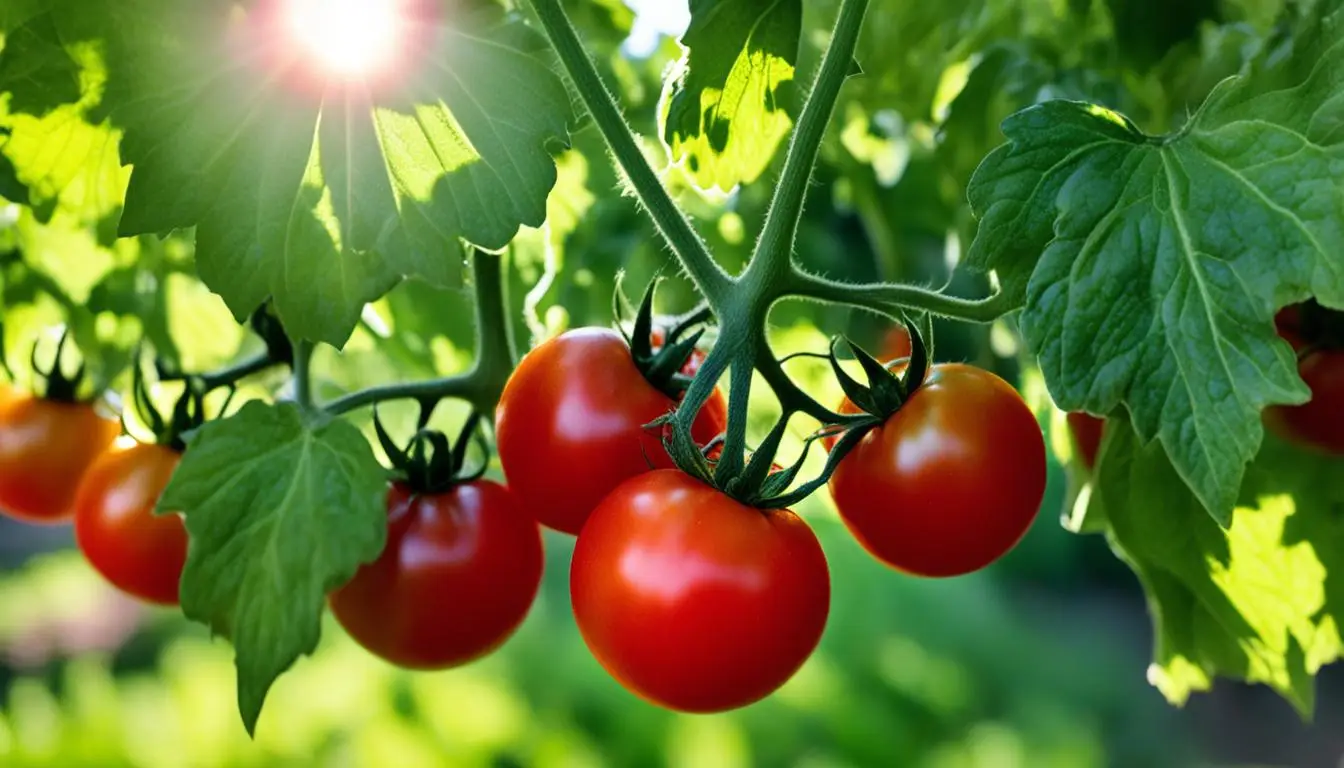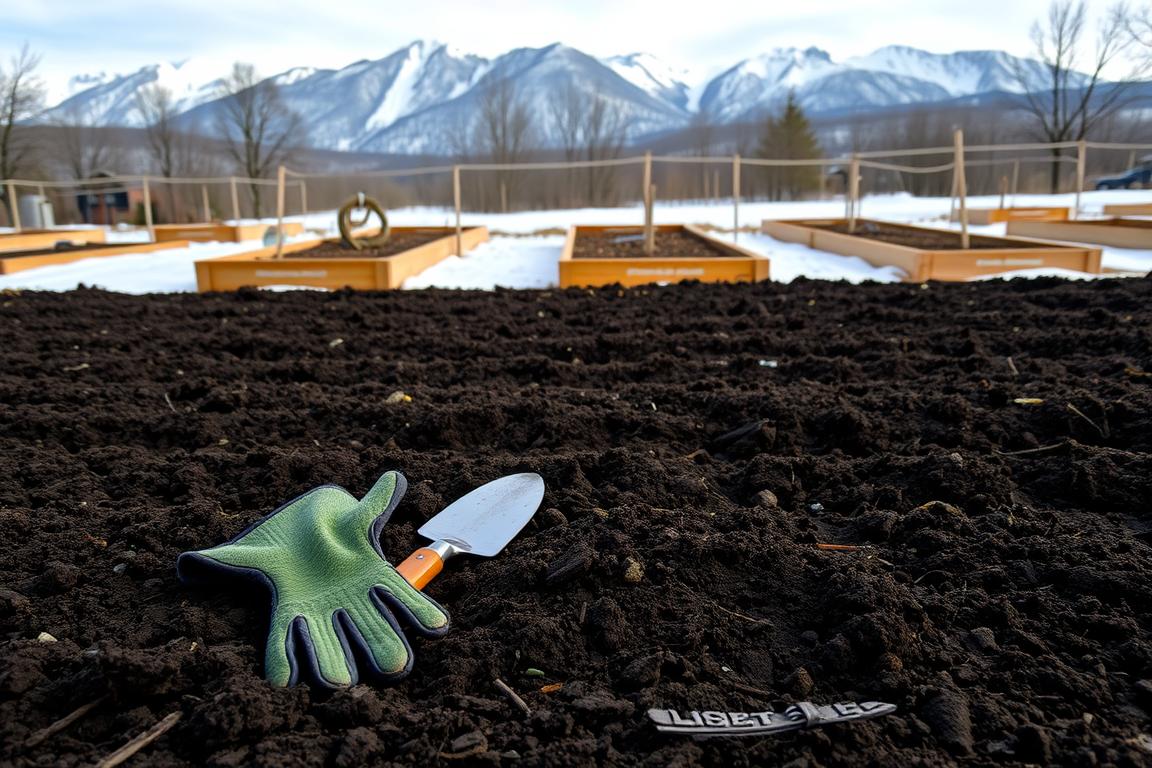Nothing beats the taste of a juicy, ripe tomato fresh from the garden. The Pink Brandywine tomato is a standout for its amazing flavor. Since the 1800s, gardeners have loved this heirloom variety. Its large, tasty fruit can weigh over a pound, delighting anyone who tries it.
Brandywine tomatoes might not produce a lot, but the quality of their harvest is unmatched. This makes them a true treat for gardeners.
Key Takeaways
- Brandywine tomatoes are a delicious heirloom variety dating back to the 1800s
- These large, juicy tomatoes can grow over a pound in size
- While not the heaviest producers, Brandywine tomatoes are prized for their exceptional flavor
- Growing Brandywine tomatoes in your garden can provide a bounty of flavorful fruit
- Gardeners interested in open-pollinated, non-hybrid tomato varieties will appreciate Brandywine
What are Brandywine Tomatoes?
Brandywine tomatoes are a favorite among gardeners and cooks. They are large, beefsteak-style tomatoes with a rich, complex flavor. Their unique look, with ridges and an asymmetrical shape, makes them stand out.
These tomatoes come from the Appalachian region. They grow well in USDA Zones 3 through 9, fitting many climates. The plants can get quite tall, up to nine feet, and have leaves that look like potato plants.
Brandywines take about 80 to 100 days to grow. They keep producing fruit as long as the conditions are good. This makes them great for home gardens, offering a steady supply of tasty brandywine tomatoes, heirloom tomatoes, and beefsteak tomatoes.
“Brandywine tomatoes are a true testament to the beauty and bounty of heirloom produce. Their unparalleled flavor and striking appearance make them a must-grow for any serious tomato enthusiast.”
History and Cultivation
The brandywine tomatoes have a long history that goes back over a century. These heirloom tomatoes are among the oldest types still sold today, showing up in seed catalogs since the late 1800s. But, we don’t know exactly where they came from.
Origins and Popularity
Some say brandywine tomatoes have Amish tomato heritage, but we can’t prove it. In 1982, an Ohio gardener named Ben Quisenberry listed brandywine seeds with the Seed Savers Exchange. He got the seeds from Dorris Sudduth Hill, who had them in her Pennsylvania family for over 80 years.
Companies like Burpee and Johnson and Stokes also started selling brandywine tomatoes in the late 1800s. But, we’re not sure if these were the same open-pollinated varieties as Quisenberry’s. Over time, many gardeners saved and shared brandywine tomato seeds. This led to many different sub-strains and cultivars. So, the tomato history and the true origins of these heirlooms are still debated among heirloom tomato fans.
Even with the mystery of their beginnings, brandywine tomatoes are loved and grown by many. They are one of the most popular heirloom tomato types in gardens and small farms.

“Wherever they came from originally, one thing is certain: Brandywines hold a place as one of the most popular homegrown tomatoes.”
Propagation and Planting
Cultivating ‘Brandywine’ tomatoes takes patience and prep. Start them indoors a few months before the last frost. Put the seeds about a quarter of an inch deep in good potting soil, in pots that are two to four inches wide. Keep the soil warm, between 65 and 90°F, for the best germination.
After the seeds sprout, move them to a sunny window, a warm greenhouse, or under grow lights. Brandywine tomatoes don’t like frost, so wait to move them outside until it’s safe. This means when the air is over 55°F and the soil is at least 65°F.
- Prepare the planting hole by digging it about two-thirds as deep as the seedling and twice the width of the root ball.
- Gently remove the bottom leaves from the seedling, leaving a couple of leaf sets at the top.
- Set the seedling into the prepared hole, ensuring the remaining leaves are a couple of inches above the soil line.
- Refill the hole with soil and water the plants thoroughly.
By following these steps, you’ll be on your way to a garden full of tasty Brandywine tomatoes.

Growing Brandywine Tomatoes
Site Selection and Soil Preparation
Choosing the right spot and preparing the soil are key to growing brandywine tomatoes. Look for a spot that gets at least eight hours of sunlight daily. Plant tomato seedlings 24 to 36 inches apart in rows that are two to four feet wide. Make sure the soil is well-drained and rich in organic matter.
Add compost or aged manure to the top foot of soil for the best growing conditions. The soil should be a bit acidic, with a pH of 6.0-6.8. Mulching with straw or shredded leaves helps keep the soil warm, improves drainage, and controls weeds.
Care and Maintenance
For your brandywine tomato plants to thrive, regular care is a must. Keep the garden weed-free and water it about an inch each week. Water at the base to prevent diseases that can spread through splashed leaves.
Tomatoes need lots of nutrients to grow well. Plant them in soil rich in organic matter. If needed, add a 5-10-10 NPK ratio fertilizer to avoid too much leaf growth and ensure plenty of fruit.
| Tomato Care Tip | Description |
|---|---|
| Site Selection | Choose a location that receives at least 8 hours of direct sunlight per day. |
| Soil Preparation | Amend the soil with compost or aged manure to create a well-drained, fertile growing medium. |
| Planting | Space brandywine tomato plants 24-36 inches apart in rows 2-4 feet wide. |
| Mulching | Apply a 2-inch layer of straw or shredded leaves to the soil surface. |
| Watering | Provide 1 inch of water per week, watering at the base of the plants. |
| Fertilization | Use a 5-10-10 NPK ratio fertilizer to support plant growth and fruit production. |
By using these tomato growing techniques and tomato care tips, you’ll have a great chance of growing delicious brandywine tomatoes in your organic garden.
Pests, Diseases, and Prevention
Growing brandywine tomatoes is rewarding, but you must protect your plants from pests and diseases. Use organic pest control and companion planting to help.
Tomatoes can get fungal diseases like early blight, anthracnose, and septoria leaf spot. Bacteria and viruses can also harm them. Keep your plants healthy by pruning and staking them well.
Common pests include hornworms, loopers, beet armyworms, slugs, and aphids. You can fight these pests with physical removal, beneficial insects, and companion plants like marigolds or herbs.
- Rotate your crop location each year to break the cycle of pests and diseases.
- Space your plants well and prune them to improve air flow.
- Water at the base of the plants to avoid splashing dirt and disease spores onto the foliage.
- Consider planting marigolds or other aromatic herbs as companion plants to deter pests.
By using these organic pest control and prevention tips, you can enjoy lots of tasty brandywine tomatoes. This way, you’ll keep pests and diseases away.
Harvesting and Storage
Growing brandywine tomatoes is rewarding, and harvesting and storing them is key. These tomatoes turn from green to bright pink, red, or yellow when they’re ready. Harvest them between 80 to 100 days after planting to avoid them splitting or falling off.
To pick your brandywine tomatoes, gently twist the fruit from the vine. This keeps the tomatoes in good shape for eating fresh or saving seeds. If you want to save seeds, cut the tomato in half, remove the seeds and pulp, and let it ferment for a few days. Then, rinse and dry the seeds to use next year.
Storing brandywine tomatoes right is crucial to keep them fresh. Put them in a cool, dark spot, like a pantry or cellar. Don’t keep them in the fridge, as it can make them taste bad. With the right storage, you can enjoy your brandywine tomatoes even after the growing season.
| Harvesting Brandywine Tomatoes | Storing Brandywine Tomatoes |
|---|---|
|
|
“Harvesting and storing your brandywine tomatoes with care ensures you can enjoy the fruits of your labor long after the growing season has ended.”
Conclusion
Growing Brandywine tomatoes in your garden is rewarding. This heirloom variety brings a taste of history to your table. It connects you to the tradition of organic gardening. Whether you’re new or experienced, adding Brandywines to your garden supports sustainable farming and the farm-to-table produce movement.
Brandywines have a rich history and are a joy to grow. Tending to them lets you enjoy their unique flavors and colors. With the right care, you can enjoy Brandywines all season. Sharing your harvest with others celebrates locally grown foods that feed our communities.
Brandywine tomatoes are more than just food. They connect you to the land and the seasons. By growing and sharing this heirloom variety, you help preserve our food systems. You support sustainable farming and help both people and the planet.
FAQ
What are Brandywine Tomatoes?
Brandywine tomatoes are an heirloom type from the 1800s. They grow big, beefsteak-like fruits that can be over a pound each. These fruits come in red, pink, or yellow and have a special, ridged look.
Where do Brandywine Tomatoes come from?
Their exact origins are unclear, but they’re linked to Amish communities in Pennsylvania. In the 1980s, an Ohio gardener named Ben Quisenberry got the seeds from Dorris Sudduth Hill. She had grown them for over 80 years.
How do you grow Brandywine Tomatoes?
Start Brandywine tomatoes indoors a few months before the last frost. They need soil that drains well and is rich in nutrients. They also need at least 8 hours of sunlight a day.
Use cages or trellises to support the tall vines. Prune and water the plants regularly for the best growth and fruit.
What are the challenges of growing Brandywine Tomatoes?
These tomatoes don’t produce a lot, so you might get fewer fruits than other types. They can also get pests and diseases like early blight and tomato hornworms. It’s important to manage pests and prevent diseases to grow them well.
How do you harvest and store Brandywine Tomatoes?
Harvest the fruits when they ripen, usually after 80 to 100 days. To pick, hold the stem and twist the fruit off the vine. For saving seeds, ferment the seeds and pulp for a few days, then rinse and dry them.






